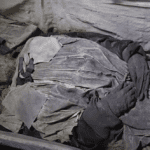 Our World
Our World  Our World
Our World  Movies and TV
Movies and TV The 10 Coolest Stars to Set Sail on The Love Boat
 History
History 10 Things You Didn’t Know About the American National Anthem
 Technology
Technology Top 10 Everyday Tech Buzzwords That Hide a Darker Past
 Humans
Humans 10 Everyday Human Behaviors That Are Actually Survival Instincts
 Animals
Animals 10 Animals That Humiliated and Harmed Historical Leaders
 History
History 10 Most Influential Protests in Modern History
 Creepy
Creepy 10 More Representations of Death from Myth, Legend, and Folktale
 Technology
Technology 10 Scientific Breakthroughs of 2025 That’ll Change Everything
 Our World
Our World 10 Ways Icelandic Culture Makes Other Countries Look Boring
 Our World
Our World 10 Ways Your Christmas Tree Is More Lit Than You Think
 Movies and TV
Movies and TV The 10 Coolest Stars to Set Sail on The Love Boat
 History
History 10 Things You Didn’t Know About the American National Anthem
Who's Behind Listverse?

Jamie Frater
Head Editor
Jamie founded Listverse due to an insatiable desire to share fascinating, obscure, and bizarre facts. He has been a guest speaker on numerous national radio and television stations and is a five time published author.
More About Us Technology
Technology Top 10 Everyday Tech Buzzwords That Hide a Darker Past
 Humans
Humans 10 Everyday Human Behaviors That Are Actually Survival Instincts
 Animals
Animals 10 Animals That Humiliated and Harmed Historical Leaders
 History
History 10 Most Influential Protests in Modern History
 Creepy
Creepy 10 More Representations of Death from Myth, Legend, and Folktale
 Technology
Technology 10 Scientific Breakthroughs of 2025 That’ll Change Everything
 Our World
Our World 10 Ways Icelandic Culture Makes Other Countries Look Boring
10 Mummies With Mysterious Stories To Tell
Death is viewed much differently today than it was in the past. While today we rush to close a coffin containing the remains of a loved one, ancient societies performed elaborate post-mortem rituals, which were equal parts macabre and fascinating. Sometimes even the dead have a fascinating story to tell.
10 Ramesses III
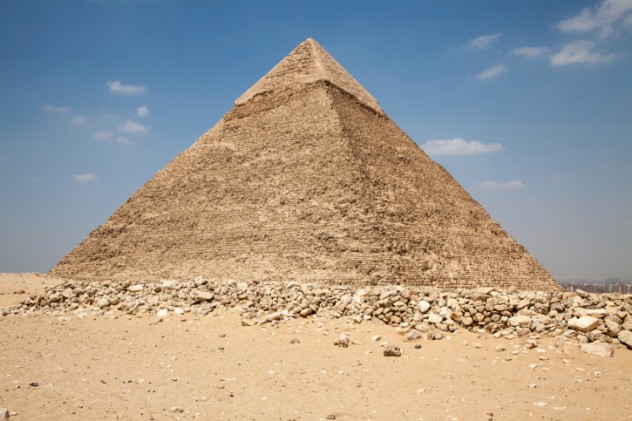
If the ancient Egyptians are known for one thing, other than their elaborately built pyramids, it’s their perfectly preserved mummies, which provide us with a window into the past. Several mummies originating during this period of time stand out, such as those of King Tut and Seti I, but the mummified remains of Ramesses III are the most mysterious.
Ramesses III was a pharaoh who dutifully served Egypt during the 20th dynasty. For over a millennium, scholars have fiercely debated the events leading to his death. Thankfully, his body was treated with a complex array of different treatments following his death that preserved his mortal remains.
Many questions were answered after his tomb was unearthed. CT scans discovered a deep cut on his throat, 7 centimeters (2.7 in) in length and going almost to his spine. This cut would have severed not only his major blood vessels, but his esophagus and trachea as well, ending the reign of one of the last great pharaohs of Egypt. To add insult to injury, many believe that he was murdered by his sons.
9 The Grauballe Man
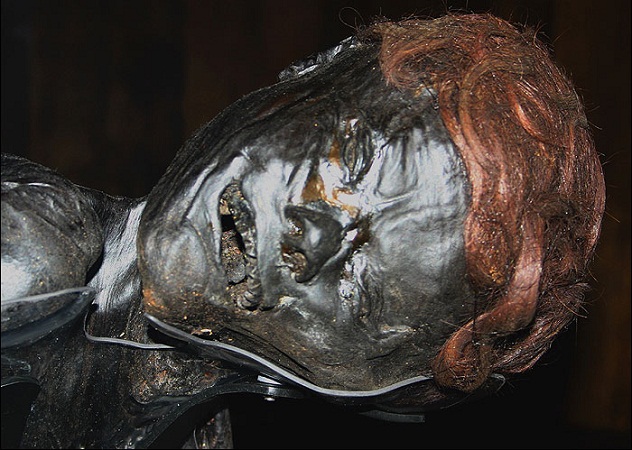
In the mid-20th century, several incredibly well-preserved bodies were discovered in a peat bog in Denmark. Among them, the Grauballe Man is the most fascinating. His still-haunted face, stark red hair, and perfectly discernible facial features also make him one of the most unsettling mummies to look at.
Radiocarbon dating of his still-intact liver showed that he lived more than 2,000 years ago, and the evidence found with his body—or lack thereof—suggests that was killed as part of a sacrificial ritual. He died when he was about 30 years old, probably from a deep cut to the neck.
8 The Ukok Princess
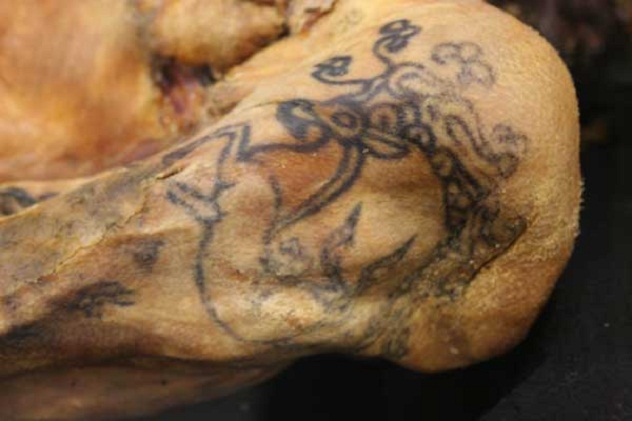
If you need another reminder that tattoos are forever, the Ukok Princess proves the point. While her body itself isn’t particularly well-preserved, she is notable for the intricate tattoos that still paint her mummified skin, despite the fact that she died more than 2,500 years ago. She was around 25 years old when she passed away.
Digital recreations show that her tattoos include animals such as deer, but with a mythical twist—the deer in her tattoo has Capricorn’s antlers and a griffin’s beak.
Researchers believe she was a member of the Pazyryk tribe, who lived in the mountains of Siberia. These nomads held a deep-seated belief that tattoos helped people to find one another in the afterlife. Because of this, their tattoos were some of the most elaborate in the world at that time. Close to her remains, which were uncovered in 1993, were the remains of six horses, which were also thought to play an important role in escorting people into the afterlife.
7 The Wet Mummy
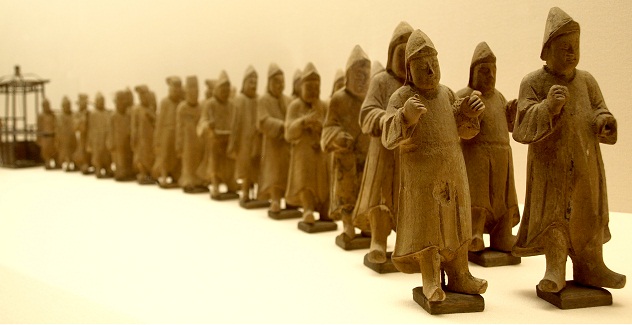
In 2011, construction workers in China were digging a foundation for a new road when they unearthed the mummy of a woman who lived 600 years ago during the Ming Dynasty.
Despite having been dead for hundreds of years and buried in wet ground, the woman is remarkably well preserved. Not only is her skin intact, but so is her hair—even her eyebrows. Several elaborate pieces of jewelry were also found on her person, including a large jade ring on her middle finger and a silver barrette still pinning back her hair.
This mummy is a mystery. It’s uncommon to find a mummified body in China, and according to archaeologist Victor Mair, there is little evidence to indicate that mummification was practiced there with any regularity—it was usually reserved for high-ranking members of society, like the famous Lady Dai. It’s more likely that the process was natural, because of the composition of the water she was lying in. It contained a startlingly small amount of oxygen, which prevented bacteria from breaking down her body in the usual process of decomposition.
6 Tutankhamun Of Torquay
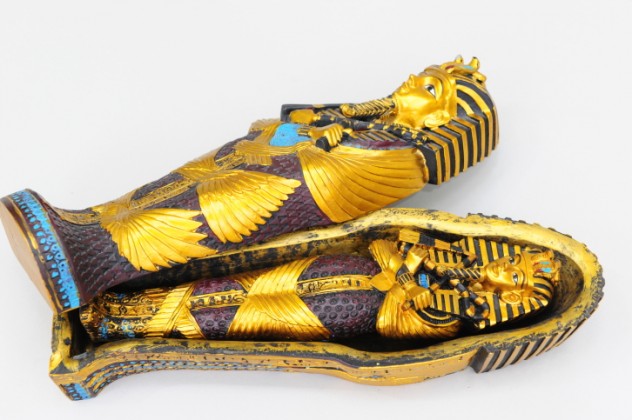
Mummification isn’t something most people would choose today. Yet Allan Billis not only volunteered for the process, but was also willing to have it documented and aired on television.
The “Tutankhamun of Torquay” was a 61-year-old taxi driver who passed away from lung cancer in 2011. Before his death, he pledged his body to science. Thanks to the work of Dr. Stephen Buckley, his corpse became the first body in over 1,000 years to be mummified using the same ancient Egyptian techniques that were used to preserve Tutankhamun, who died more than 3,000 years ago, in 1323 B.C..
As for how his family feels about his delayed decomposition, following the mummification process, his wife said, “I’m the only woman in the country who’s got a mummy for a husband.”
5 Dashi-Dorzho Itigilov

In life, Dashi-Dorzho Itigilov was a monk. One night in 1927, he told his students and fellow monks that his time had come to pass from this life into another, before asking them to join him in meditation.
The story goes that while in the middle of the meditation, he quietly passed away. Shortly afterward, he was buried sitting upright in the lotus position, shielded from the elements by a pine box.
Several years later his body was exhumed, revealing his corpse to be well-preserved and still in the lotus position. He was re-interred and the coffin was encased in salt. His body was recently exhumed again with several witnesses present, including scientists and forensic experts. Once again, his body was found to be in near-perfect condition. Analysis of skin and hair samples showed that Itigilov’s cells more closely resemble those of someone who had been dead for 36 hours than those of a person who has been dead for almost 100 years.
4 The Franklin Expedition Mummies
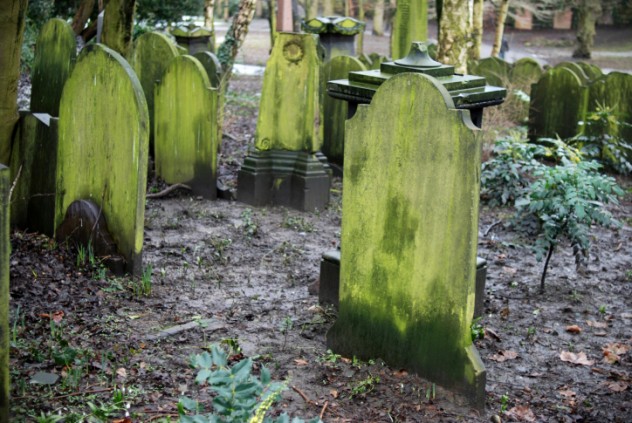
In 1845, more than 100 men set sail to the New World in the hope of coming across the Northwest Passage, a legendary trade route to Asia (apparently, Lewis and Clark’s failure had only emboldened them). The two ships carrying the men and their supplies never reached their destination—they were never heard from again. At least not until 1850, when a separate expedition came across what remained of a long-dead community on Beechey Island, including three mysterious graves, and in them the bodies of John Torrington, John Hartnell, and William Braine.
More than 100 years later, in 1984, a team of anthropologists traveled to the region to conduct forensic tests on the bodies found in the graves on Beechey Island. After exhumation, it was discovered that all three bodies were spectacularly well-preserved, thanks in no small part to the permafrost in the tundra. So well-preserved, in fact, that the team was able to determine the probable cause of death for the men, who had died some 138 years before.
As well as signs of pneumonia and tuberculosis, they learned that each of them had a lethal amount of lead in his system, probably from the ship’s water distillation system, which would have produced high lead content. The amount of lead found in their system was staggering—each man would have needed to consume 3.3 mg a day over the course of eight months to account for it.
3 The Woman Who Gave Birth To A Mummy

In 1955, Zahra Aboutalib went to the hospital to have a baby, but after a long labor, she had not given birth. Her doctor ordered a C-section but, terrified of the surgery, she left the hospital. Some time later, the baby died in her womb. She declined to have the baby removed.
Some 46 years later, she began to have excruciating pains in her abdomen. When doctors took an X-ray, they discovered a massive “growth,” which they believed to be a tumor. Further testing revealed the growth to be the calcified remains of her baby—the one who had passed away almost five decades before.
This phenomenon is called lithopedion. It’s extremely rare, with only about 300 cases ever recorded. The process begins if the body is unable to expel the dead fetus. In order to protect itself from infection caused by decomposing tissue, the body develops a layer of calcified material around the fetus, effectively mummifying the body and turning it into a “stone baby.”
2 La Doncella
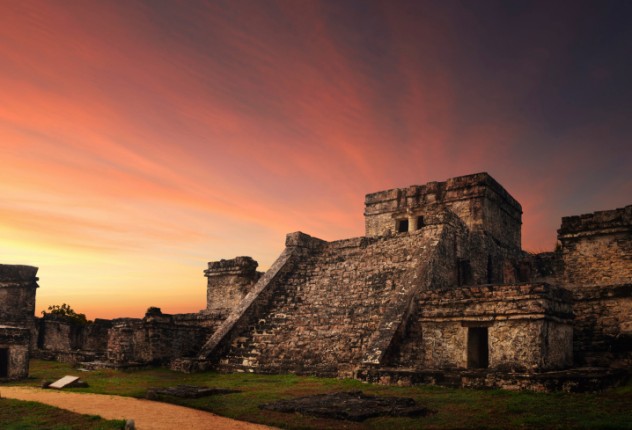
La Doncella, or the Maiden, is the remarkably well-preserved body of a 15-year-old Incan girl, who was probably sacrificed more than 500 years ago. The ceremony took place on the Argentinian volcano Llullaillaco, 6,700 meters (22,000 ft) above sea level.
Her remains, along with the remains of two other children, were uncovered in 1999. Since then, we’ve learned many fascinating details about her, the first being that before her death she suffered an illness similar to tuberculosis or a chronic lung infection, which would probably have been a death sentence at the time. It’s believed that she died of hypothermia.
It’s obvious that her people took great measures to comfort her before she died—to be sacrificed was actually a great honor, and not only did she have corn liquor in her system, but fragments of coca leaves, from which cocaine is derived, were discovered in her mouth. The Incas used this to counteract the effects of altitude sickness.
1 Evita Peron
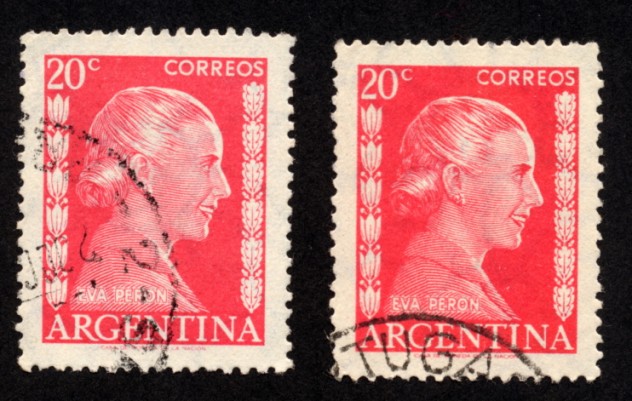
In life, Eva Peron was the wife of Juan Peron, who served as the President of Argentina from 1946 to 1955. This made her the beloved “First Lady of Argentina.” On July 26, 1952, Evita passed away from cancer at the young age of 33.
Following her death, her body was preserved using a cocktail of different treatments. The goal was to make her body suitable for public display, so that a mourning nation could file past and say their goodbyes.
Then, in 1955, Anti-Peronist militants stole her body, sending her mummified corpse on an odyssey that lasted almost 15 years. Eventually, her body was returned to her husband, who was now remarried to a woman named Isabel Peron. Unfortunately, it was revealed that her Evita’s corpse had suffered multiple blows, including blunt-force trauma to the face and feet, and a missing finger.
It is said that after regaining custody of her body, the couple kept it on display in the home they shared, sometimes even perching her at their kitchen table. Peron’s second wife combed Evita’s hair every day, and allegedly crawled inside the coffin to lie beside her, “hoping to soak up some of Evita’s magic vibrations.”
Now Evita’s remains are interred in her family’s crypt, and the woman with the restless corpse is finally at rest.
Jaime devotes all her time to writing about the various wonders of the universe (on top of writing for a slew of science-based organizations). She also has a weird thing for true crime, beards, and Dean Winchester. Those of you with the same keen sense of admiration for science (and/or Dean Winchester) should join her on Facebook or can contact her by email.
